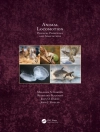The existence of life at high temperatures is quiet fascinating. At elevated temperatures, only microorganisms are capable of growth and survival. Many thermophilic microbial genera have been isolated from man-made (washing machines, factory effluents, waste streams and acid mine effluents) and natural (volcanic areas, geothermal areas, terrestrial hot springs, submarine hydrothermal vents, geothermally heated oil reserves and oil wells, sun-heated litter and soils/sediments) thermal habitats throughout the world. Both culture-dependent and culture-independent approaches have been employed for understanding the diversity of microbes in hot environments. Interest in their diversity, ecology, and physiology has increased
enormously during the past few decades as indicated by the deliberations in international conferences on extremophiles and thermophiles held every alternate year and papers published in journals such as Extremophiles. Thermophilic moulds and bacteria have been extensively studied in plant biomass bioconversion processes as sources of industrial enzymes and as gene donors. In the development of third generation biofuels such as bioethanol, thermophilic fungal and bacterial enzymes are of particular interest. The book is aimed at bringing together scattered up-to-date information on various aspects of thermophiles such as the diversity of thermophiles and viruses of thermophiles, their potential roles in pollution control and bioremediation, and composting.
Innehållsförteckning
Preface.- Part I Thermophiles in the environment.- Diversity of hot environments and thermophilic microbes.- Exploring the ecology of thermophiles from Australia’s Great Artesian Basin during the genomic era.- Hot environments from Antarctica.- Bacterial and biochemical properties of newly invented aerobic, high-temperature compost.- Role of thermophilic microflora in composting.- Metal remediation by thermophilic microorganisms.- CO-oxidizing anaerobic thermophilic prokaryotes.- Biomineralization in thermal environments.- Phylogeny and biological features of thermophiles.- Biology, biodiversity and application of thermophilic viruses.- Part II Genomics, Metagenomics and Biotechnology.- Genomics of thermophilic bacteria and archaea.- Comparative genomics of thermophilic bacteria and archaea.- Host-vector system in thermophiles.- Molecular chaperones in thermophilic eubacteria and archaea.- Heterologous Production of thermostable proteins and enzymes.- Discovery of thermostable enzymes from hot environmental samples by metagenomic approaches.- DNA polymerases and DNA ligases.- Molecular diversity of biotechnological relevance of thermophilic actinobacteria.- Mechanisms of thermostability adopted by thermophilic proteins and their use in white biotechnology.- Starch-hydrolyzing enzymes from thermophiles.- Thermostable archaeal and bacterial pullulanases and amylopullulanases.- Sugar metabolic enzymes.- Restriction enzymes from thermophiles.- Microbial chitinases.- Phytases and phosphatases of thermophiles: production, characteristics and multifarious applications.- Pectinases of thermophilic microbes.- Developments in thermostable gellanlyase.- Lignocellulolytic system of thermophilic fungi and actinomycetes.- Cellulases of thermophilic microbes.- 30 Xylanases from thermophilic fungi.- 31 Thermostable bacterial xylanases.- 32 Thermostable proteases.- 33 Microbial keratinases.- 34. Biocatalysis through thermostable lipases. Index.












